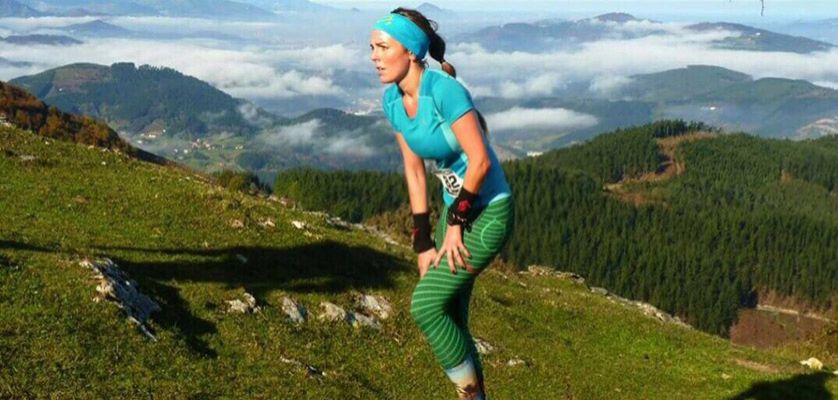Nowadays, ultra-distance races, whether on asphalt or in the mountains, are becoming more and more popular. Normally these events range from 4-6 hours to several days, a clear example of the latter is the Race Across America (RAAM) or the ultra trail Du Mont Blanc. Therefore, it is evident that in order to successfully complete a competition of these characteristics it will be necessary to have a good physical capacity, to take care of the psychological aspect and undoubtedly the nutrition during the competition.
Once we understand the high level of demand of this type of competition, we will ask ourselves the question that sooner or later almost all of us who have been running for some time will ask ourselves: how much time will I need to prepare for a competition of these characteristics?

Knowing the objective
This question is difficult to answer, the first thing we must know to prepare for our first ultradistance is to select it. It will be necessary to know the type of profile, distance, accumulated elevation gain and above all, we will have to make an approximate and realistic calculation of the time that this race can take us. Let's imagine that we are hesitating between a race of 60 kilometers with 3000 meters of accumulated elevation gain and another of the same distance but its accumulated elevation gain will be 8000 meters, the duration will not be the same and therefore our preparation should vary significantly.
Previous experience in ultra trail or ultradistance races

Before we start to sign up for the desired race , it is necessary to reflect on our preparation. A key data to face the preparation and competition successfully is to know how long we have been training systematically. In addition, the weekly and monthly training volume (either in kilometers or in time) will be one of the most important variables in order to know our starting point. In other words, years of experience and training volume will be one of the most important factors to take into account.
If any of you are wondering at this point why a previous experience, the answer is simple, if we have been training for several years to compete in lower distances this will have made us accumulate a considerable volume of kilometers. Therefore, our joints will be accustomed to the impacts due to constant practice and prepared to withstand a gradual increase in workload. In turn, training to compete in shorter races will have given us the opportunity to work at high intensities, which will be a good base to start specific training for ultra-distance.
Time needed to prepare for an ultra trail
Surely some will now question whether it is possible to prepare for an ultradistance from scratch in a period of 10-12 months. By "from scratch" I mean without any previous running experience or endurance training.
Theoretically, and always after having had a medical check-up with the corresponding stress test, it is possible to prepare for one of these distances, although I would not recommend it in any case. The risk of injury due to a lack of time for the osteoarticular structures to adapt to a high demand, the more than likely lack of a good progression in the increase of training load and a bad training-recovery ratio will cause us to suffer some kind of problem during our preparation.
Therefore, I would opt for a long-term preparation23 years minimum) for those people with a small sporting background or novice athletes. Although some readers may think that this is too long, since the improvement in performance can be exponential and also occur in a short period of time, it is necessary to emphasize the need for proper progression. Apart from this progression, it is interesting that the runners improve their performances in shorter distances allowing them to improve further in longer and longer distances, in this way we can get an extra motivation to reach the big goal.
Progressive increase of work

On the other hand, in advanced athletes with years of experience, the jump to an ultradistance can be made in less time. However, it is necessary that we do not only think about a decrease in training intensity and a higher volume. Rapid increases of more than 20-30% of the average weekly training volume can defeat our goal. Therefore, the way in which volume progressions, training load and recovery time between sessions, microcycles and demanding mesocycles are carried out is of special relevance.
Determining the exact or approximate time for any athlete is impossible. Because we each train in a particular way, accumulate different volumes of work and compete in events of varying distances.
Therefore, there will not be a golden parameter that indicates the time at which you are ready. However, we can take small steps towards the goal we have set for ourselves. For example, if I run an average of 50 km per week, one of the main monthly objectives to achieve could be to increase my training volume by 10-15%, staying at the end of the month at 55-63 km as the maximum volume achieved in a week of that mesocycle.
Subsequently, I will increase the volume until I can achieve a peak close to 90-100 km in 6-7 months or even more, if I can dedicate more time. First of all we have to be realistic and take into account one of the main handicaps that we have the running enthusiasts, the time we can devote to training. At this point it is necessary to remember the need to introduce an alternation of loads in training. In other words, there will be weeks in which we increase the volume or training load progressively, followed by weeks or longer periods characterized by a decrease in the load or training volume.
Gradual progression over shorter distances
Finally, it is as important to make a progression in terms of training volume and load as it is in terms of the distance to be raced. Progressing from shorter distances to longer distances will make it possible to gain experience in the dosage of efforts and to acquire habits such as correct race nutrition and hydration, which will be key in ultradistance competitions. It is obvious that it will not be a good strategy to go from competing in half marathon to marathon distances in a period of less than 4-5 months and then move on to ultradistance in another 4-5 months. That is why it will be necessary a period of at least 2 years, taking as a reference the previous case, to be able to face the ultradistance competition with guarantees of arriving in optimal conditions and with the homework done.

